

2013 mainly featured a rainy June which disturbed flowering and a hot and dry summer.
Thanks to a historically low yield in volumes, 2013 Petit Cheval is pleasantly straightforward and fresh.


2013 mainly featured a rainy June which disturbed flowering and a hot and dry summer.
Thanks to a historically low yield in volumes, 2013 Petit Cheval is pleasantly straightforward and fresh.
Weather conditions and vine’s growing cycle
Temperatures and rainfall
After an April with temperatures close to normal values, May and June were exceptionnally cool and damp with a significant lack of sunshine. July saw the beginning of a very hot and dry period, but the end of the month was punctuated by violent storms – for example, 37 mm of rain was recorded on July 27. The hail spared Cheval Blanc, however. Early August was marked by a period of inclement weather with a particularly violent storm on 2 August which, as you know, destroyed several thousand hectares of Bordeaux vineyards. However, once again Cheval Blanc was spared. A spell of hot, dry and sunny weather settled in from 8 August to 5 September.
September featured several days of quite heavy rain, but the total amount of rainfall remained close to normal values. Early October was mild and very damp.
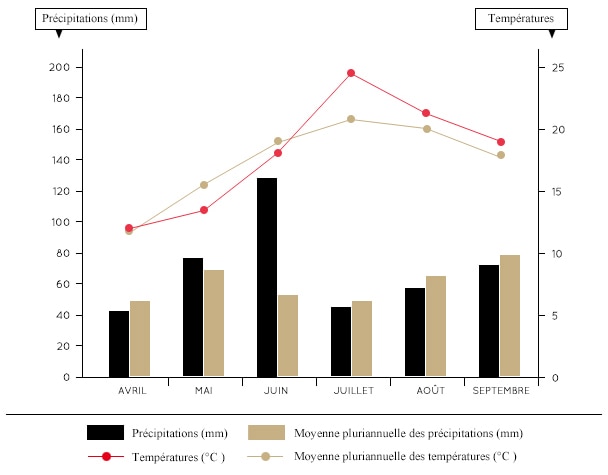
Water balance
In order to grow well, the vine needs for water stress to set in slowly so the grapes to ripen well and become concentrated. The spring was wet and kept the water stress from setting in until July. A spell of dry weather settled in from 8 August to 5 September, which increased the water stress on clay and on gravel soils, but not on sandy soils. 58mm of rainfall were measured during the harvest between 30th September and 15th October.

Growing season
The cool, rainy spring held back vine phenology. This delay amounted to approximately a week at budburst, and more than two weeks at flowering, which took place in cool and particularly damp weather. Significant coulure was observed in both Merlot and in old Cabernet Franc plots. Branch growth continued until late in the season, ending in early September for gravel and clay soils and not until late September or early October for sandy soils.
Mildew pressure was high throughout the season, including in August. At harvest time, the mild but damp weather produced botrytis pressure.
| Phenological stage | Merlot 2013 |
Average 1994-2014 | Cabernet franc 2013 |
Average 1994-2014 |
|---|---|---|---|---|
| Bud break | April, 5th | March, 28th | April, 12th | April, 2nd |
| Flowering | June, 13th | May, 30th | June, 16th | June, 1st |
| Véraison | August, 17th | August, 2nd | August, 21th | August, 8th |
| Beginning of the Harvest | September, 30th | September, 19th | October, 3rd | September, 27th |
| End of the Harvest | October, 9th | September, 27th | October, 15th | October, 5th |
| Number of days between… | ||||
| Bud break and Flowering | 69 days | 63 days | 65 days | 60 days |
| Flowering and Véraison | 65 days | 64 days | 66 days | 68 days |
| Véraison and Harvest | 45 days | 48 days | 43 days | 50 days |
Mildew pressure was high throughout the season, including in August. At harvest time, the mild but damp weather produced botrytis pressure.
Features of the vintage
Ripening and yields
The hot weather in July and the dry period in late August did not speed up phenology, which was more than two weeks behind at mid-veraison. This made it the lastest veraison for 25 years. Harvesting took place from 30 September to 15 October. The choice of harvest date was a compromise between the desire to attain optimum ripeness and the requirement to ensure a good level of health. As a result, the ripening period – the number of days between mid-veraison and harvesting – was slightly shorter than the average over the last fifteen years.
| 2013 yields (hl/ha) | Average from 1996 to 2014 | |
| Merlot | 23.0 | 38.9 |
| Cabernet Franc | 22.0 | 34.2 |
The yield for 2013 was very low (22hl/ha). The main reason for this was the high level of coulure, caused by adverse fertilization conditions at flowering. Significant sorting during the harvest also had a negative impaction the historically low volumes harvested.
Cellar work
The wine underwent no saignée (bleeding from fermentation vats), and was not chaptalised. It contains no press wine and was entirely aged in new oak barrels for 15 months.
Blending
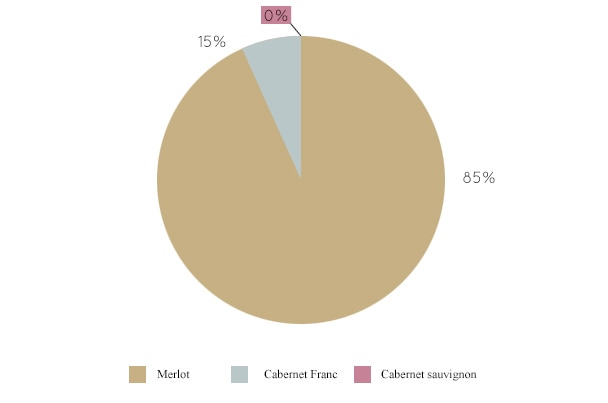
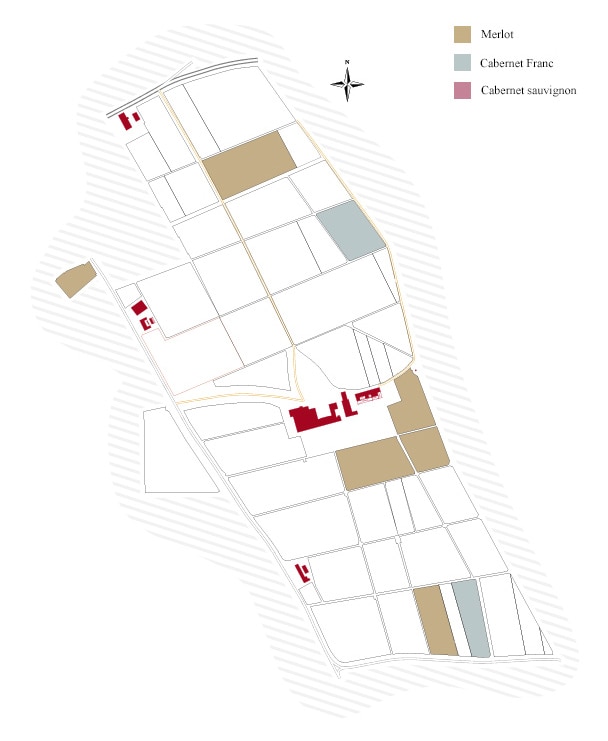
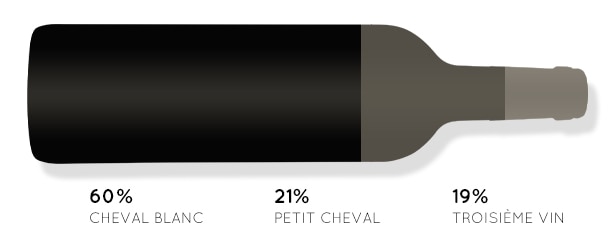
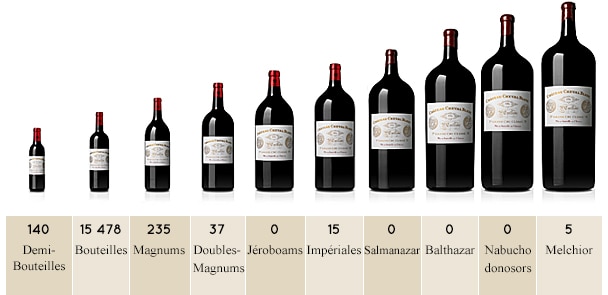
| Degree of alcohol | 13.10 |
|---|---|
| Total acidity (g H2 S04/L) | 3.25 |
| Volatile acidity (g H2 SO4/L) | 0.25 |
| pH | 3.59 |
| Total SO2 (mg/L) | 120 |
| Reducing sugar content (g/L) | <2 |
| IPT (DO280) | 60 |
Tasting
 An appealing and moderately intense colour.
Very fresh on the nose, with good fruit.
The wine is straightforward and fresh in the attack. The mid-palate offers good intensity, with no aggressiveness, revealing blackcurrant, raspberry and gooseberry flavours accompanied by note of freshly cut flowers such as rose and violet. A discreet touch of oak serves as a backdrop for these intense notes. The finish is pleasantly full with still firm tannins.
An appealing and moderately intense colour.
Very fresh on the nose, with good fruit.
The wine is straightforward and fresh in the attack. The mid-palate offers good intensity, with no aggressiveness, revealing blackcurrant, raspberry and gooseberry flavours accompanied by note of freshly cut flowers such as rose and violet. A discreet touch of oak serves as a backdrop for these intense notes. The finish is pleasantly full with still firm tannins.An appealing and moderately intense colour.
Very fresh on the nose, with good fruit.
The wine is straightforward and fresh in the attack. The mid-palate offers good intensity, with no aggressiveness, revealing blackcurrant, raspberry and gooseberry flavours accompanied by note of freshly cut flowers such as rose and violet. A discreet touch of oak serves as a backdrop for these intense notes. The finish is pleasantly full with still firm tannins.



